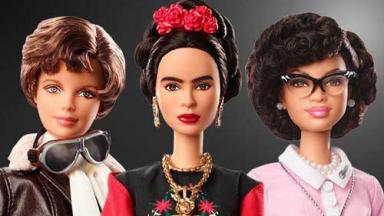Main Content
Discover women's history, and future, at your library

March is National Women’s History Month, a chance to learn about and celebrate some of the many achievements and contributions women have made throughout history.
This national holiday had its beginnings in the 1970s as various educators across the nation started promoting women’s achievements in history for the first time and sought to have national education curriculums revised to include more women’s stories.
At the national level, in 1980, President Jimmy Carter declared the week of March 8, 1980 as National Women’s History Week. March has been home to International Women’s Day in some countries since 1911. It is now celebrated world-wide on March 8.
“From the first settlers who came to our shores, from the first American Indian families who befriended them, men and women have worked together to build this nation,” President Carter said in his message to the nation designating March 2-8, 1980 as National Women’s History Week.
“Too often the women were unsung and sometimes their contributions went unnoticed. But the achievements, leadership, courage, strength and love of the women who built America was as vital as that of the men whose names we know so well.”
That same year, Representative Mikulski and Senator Hatch co-sponsored a resolution for National Women’s History Week to be celebrated in 1981. From that point forward, states began declaring a National Women’s History Month, and 14 states had adopted that as law by 1986.
Thereafter, congress was lobbied, and subsequently declared March as National Women’s History Month in perpetuity.
Who are some of these women, and where can one learn of their achievements? Considering the source of this article, the answer is, naturally, your local library!
You can read about those women who helped shape our emerging nation in Ladies of Liberty, by Cokie Roberts, if that particular time period interests you. Or, you could jump ahead to women of the 19th century and investigate such individuals as Clara Barton, Susan B. Anthony or Louisa May Alcott the famous author, or even read one of her publications.
Perhaps the inspiring Helen Keller intrigues you, the first blind-deaf person to graduate from college with the help of Anne Sullivan. They went on together to advocate for people with disabilities. You can read about Anne in Beyond the Miracle Worker by Kim Nielsen, or watch the DVD The Miracle Worker.
In the more current 20th century, Almost Astronauts: 13 women who dared to dream tells the story of the Mercury 13, among them Geraldyn (Jerrie) Cobb, the first woman to pass qualifying exams for astronaut training in 1959. Cobb and the other women were ultimately not allowed to train because of their gender, but their efforts paved the way for later changes, and you could check out Sally Ride: America’s First Woman in Space or I Touch the Future--: the story of Christa McAuliffe, or read about some of the many more women who have ventured into space.
Now we’re not even 18 years into the 21st century, so if you’re interested in reading about a world changer in the news today, please stop in. We’re certain to have something currently trending in regards to women making a difference.
Photo: Mattel publicity shot of the new Barbie® Inspiring Women™ Series, featuring dolls representing famous women from history. Left to right are aviator Amelia Earhart, artist Frida Kahlo, and mathematician Katherine Johnson.

Follow us on social media